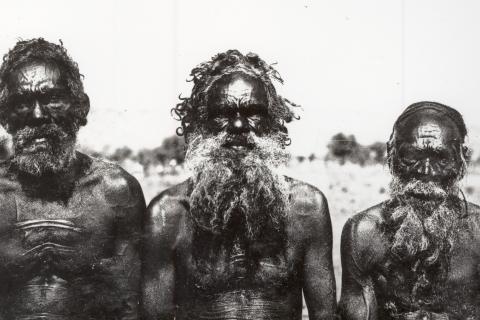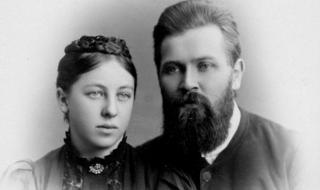
Carl Strehlow
Carl Friedrich Theodor Strehlow (1871-1922) is perhaps the most well-known of the missionaries. Under his guidance the dilapidated Finke River Mission rose from the ashes. After arriving at the mission as a young man recently ordained in 1894, he stayed there for almost three decades - the remainder of this life. He was a missionary, linguistic scholar and a humanitarian who left behind an immensely valuable legacy in his linguistic and ethnographic work.
Read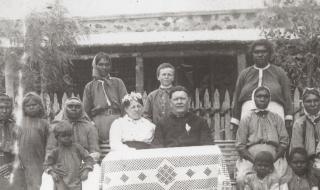
Hermannsburg under Pastor Carl Strehlow
Carl Strehlow is perhaps the best known of the missionaries to have worked at Hermannsburg. Appointed by the Immanuel Synod as their first missionary to Hermannsburg, he left a lasting legacy. He was not the only missionary there and many of the achievements in that time were a team effort between him and his wife Frieda Strehlow, co-missionary Pastor Bogner and the lay workers such as builders Mr. Hart and Mr. Haemmerling. Between them they rebuilt the neglected and dilapidated mission.
Read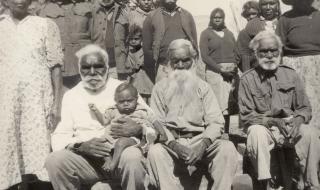
Moses Tjalkabota
The story of Moses Tjalkabota is fascinating. A strong and compelling orator, he embraced Christianity and European ways with enthusiasm and insisted that others should do so too. He repeatedly challenged the traditional Elders and their beliefs and in this, he was probably more influential than the white missionaries themselves.
Read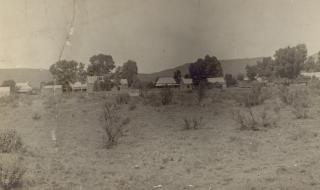
The Stockman’s House
The exact origin of this building is a mystery waiting to be solved; at its core it may be as old as 1896 although there have been many modifications over the years.
Read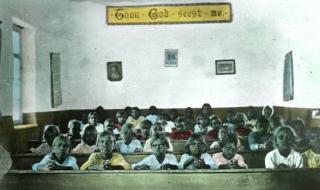
Learning at the Mission
One of the most evocative buildings on the mission, it is easy to imagine this building full of the laughter of children, the voice of the teacher leading lessons and no doubt the occasional swish of the cane!
Read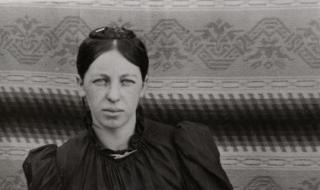
Frieda Strehlow: wife, mother, pioneer
Frieda’s story is amazing! Born Friederike Johanna Henriette Keysser on 31 August 1875 in Bavaria, she fell in love with Carl Strehlow, within 36 hours of meeting him. Her love drove her to travel to what must have seemed like the end of the earth to join him on his mission.
Read
Feeding the Mission
Imagine the storage of meat in the outback heat without the convenience of modern refrigeration! The stone walls and stone floor served to provide an environment as cool as possible for keeping meat.
Read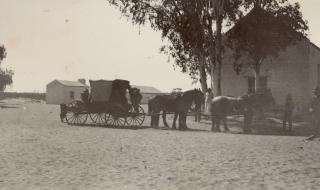
A Change of Direction 1922-1926
Following the death of Carl Strehlow. A review of the mission identified several areas of change in the approach of the mission, including the use of native evangelists, Aboriginal work-based training and the development of a commercial cattle business
Read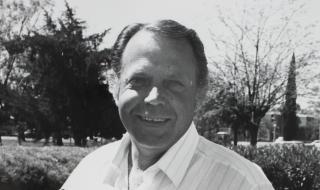
Mission to Town - Hermannsburg Mission under Pastor Albrecht
Pastor Paul Albrecht grew up at Hermannsburg, the son of Pastor F.W Albrecht and Minna. His work as Field Superintendent for Finke River Mission was at a crucial time of change, as assimilationist policies gave way to policies of self-determination. During his tenure Hermannsburg transitioned from an active mission station to the heritage precinct you see today alongside the modern township of Ntaria.
Read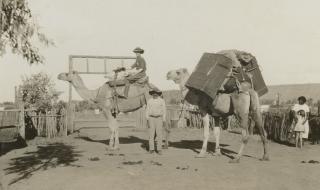
Theodor Georg Heinrich Strehlow (1908-1978)
Ted or Theodor Georg Heinrich (T.G.H.) Strehlow’s story is fascinating. The son of the missionary Carl and Frieda, he spent his formative years growing up on Hermannsburg Mission, leaving only on the tragic journey on which his father died. He returned to Central Australia many years later as the local patrol officer and anthropologist and picked up where his father left off recording the culture of the Arrarnta people and their neighbours.
Read


